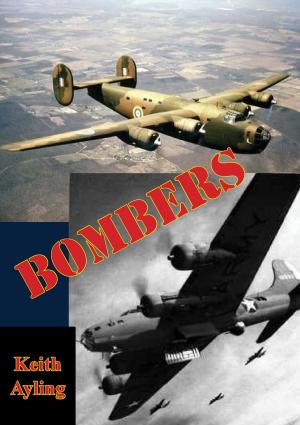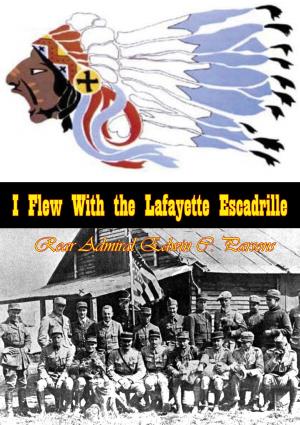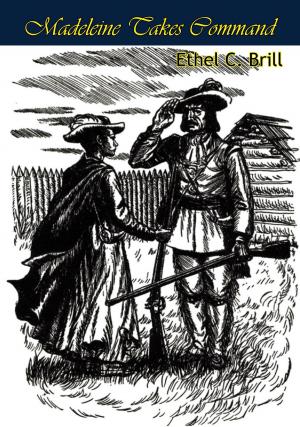Like A Thunderbolt: The Lafayette Escadrille And The Advent Of American Pursuit In World War I [Illustrated Edition]
Nonfiction, History, Germany, European General, Military, United States| Author: | Roger G. Miller | ISBN: | 9781786252470 |
| Publisher: | Tannenberg Publishing | Publication: | November 6, 2015 |
| Imprint: | Tannenberg Publishing | Language: | English |
| Author: | Roger G. Miller |
| ISBN: | 9781786252470 |
| Publisher: | Tannenberg Publishing |
| Publication: | November 6, 2015 |
| Imprint: | Tannenberg Publishing |
| Language: | English |
Includes 29 Illustrations
The advent of an American squadron, or “escadrille,” within the French air force, the Service Aeronautique, had been far from a simple process. French leaders initially held the belief, common at the time, that the war begun in 1914 would be a short one. The potential value of American volunteers fighting for France both for propaganda purposes and for helping bring the power of the New World into the war on the side of the Allies was thus irrelevant at first. By early 1915, however, the French began to accept American volunteers and assign them to escadrilles. In early 1916, the Service Aeronautique united several of these men in an elite chasse unit, which quickly earned an enviable reputation for audacity, bravery, and élan.
Success of this unit, the Lafayette Escadrille, had three consequences. First, its existence encouraged a large number of Americans, far more than needed in one escadrille, to volunteer for French aviation. These individuals, identified unofficially as members of a “Lafayette Flying Corps,” served in numerous French air units. Second, the publicity surrounding the Lafayette Escadrille contributed favorable press for the Allied cause, strengthened ties between France and the U.S., and ultimately helped prepare the U.S. to participate on the Allied side of the conflict. Third, the existence of a large body of experienced American pilots provided combat veterans for the Air Service of the American Expeditionary Forces (AEF) in France when the U.S. ultimately entered the war. These veterans helped instill in the U.S. Air Service the attitudes and practices of the Service Aeronautique, an infusion especially reflected in two U.S. pursuit squadrons, the 103rd Aero Squadron, made up of Lafayette Escadrille pilots, and the 94th Aero Squadron, the most famous American combat squadron of the war.
Includes 29 Illustrations
The advent of an American squadron, or “escadrille,” within the French air force, the Service Aeronautique, had been far from a simple process. French leaders initially held the belief, common at the time, that the war begun in 1914 would be a short one. The potential value of American volunteers fighting for France both for propaganda purposes and for helping bring the power of the New World into the war on the side of the Allies was thus irrelevant at first. By early 1915, however, the French began to accept American volunteers and assign them to escadrilles. In early 1916, the Service Aeronautique united several of these men in an elite chasse unit, which quickly earned an enviable reputation for audacity, bravery, and élan.
Success of this unit, the Lafayette Escadrille, had three consequences. First, its existence encouraged a large number of Americans, far more than needed in one escadrille, to volunteer for French aviation. These individuals, identified unofficially as members of a “Lafayette Flying Corps,” served in numerous French air units. Second, the publicity surrounding the Lafayette Escadrille contributed favorable press for the Allied cause, strengthened ties between France and the U.S., and ultimately helped prepare the U.S. to participate on the Allied side of the conflict. Third, the existence of a large body of experienced American pilots provided combat veterans for the Air Service of the American Expeditionary Forces (AEF) in France when the U.S. ultimately entered the war. These veterans helped instill in the U.S. Air Service the attitudes and practices of the Service Aeronautique, an infusion especially reflected in two U.S. pursuit squadrons, the 103rd Aero Squadron, made up of Lafayette Escadrille pilots, and the 94th Aero Squadron, the most famous American combat squadron of the war.
![Cover of the book Like A Thunderbolt: The Lafayette Escadrille And The Advent Of American Pursuit In World War I [Illustrated Edition] by Roger G. Miller, Tannenberg Publishing](https://www.kuoky.com/images/2015/november/500x500/9781786252470-JBzr_500x.jpg)

![Cover of the book Arise To Conquer [Illustrated Edition] by Roger G. Miller](https://www.kuoky.com/images/2015/november/300x300/9781786257581-cPT5_300x.jpg)

![Cover of the book Wanat : Combat Action In Afghanistan, 2008 [Illustrated Edition] by Roger G. Miller](https://www.kuoky.com/images/2014/august/300x300/9781782894940-TjlN_300x.jpg)
![Cover of the book Thunderbolt!: The Extraordinary Story Of A World War II Ace [Illustrated Edition] by Roger G. Miller](https://www.kuoky.com/images/2015/november/300x300/9781786251817-P2gc_300x.jpg)






![Cover of the book D-Day 1944 - Air Power Over The Normandy Beaches And Beyond [Illustrated Edition] by Roger G. Miller](https://www.kuoky.com/images/2014/august/300x300/9781782898870-gH4f_300x.jpg)


